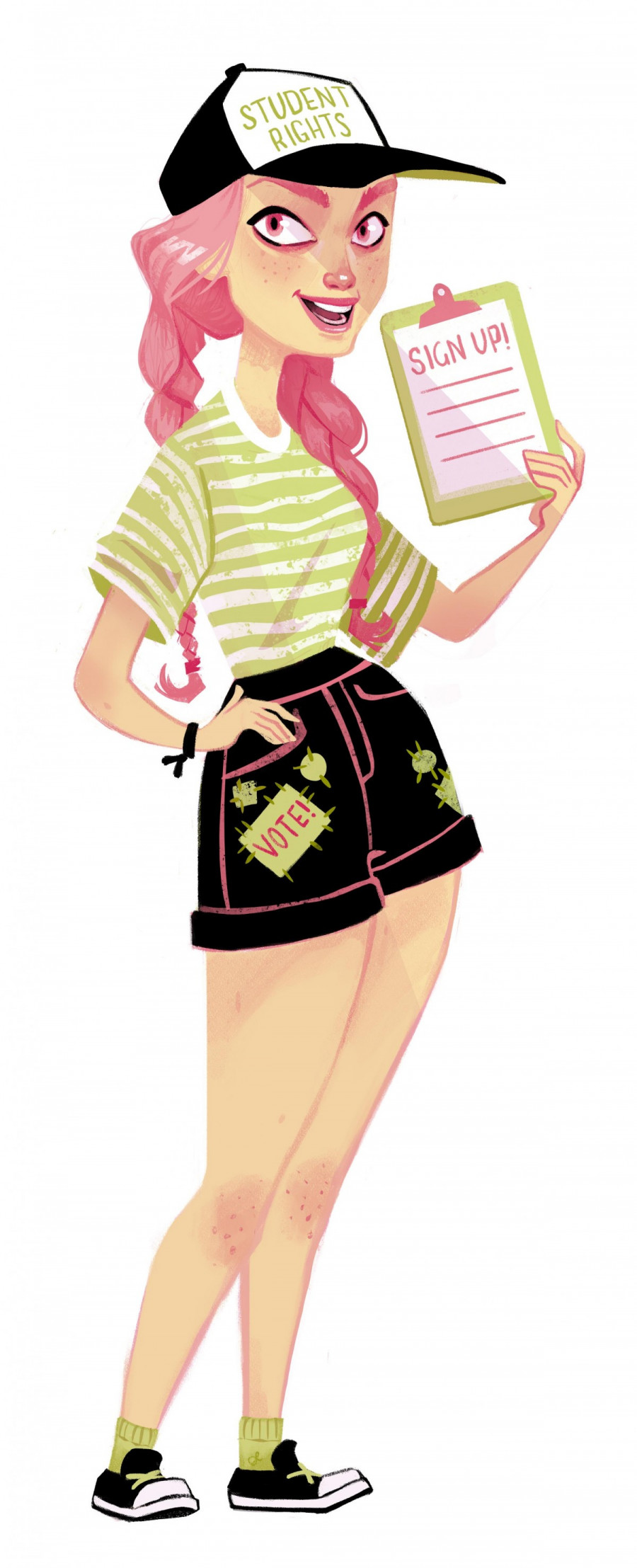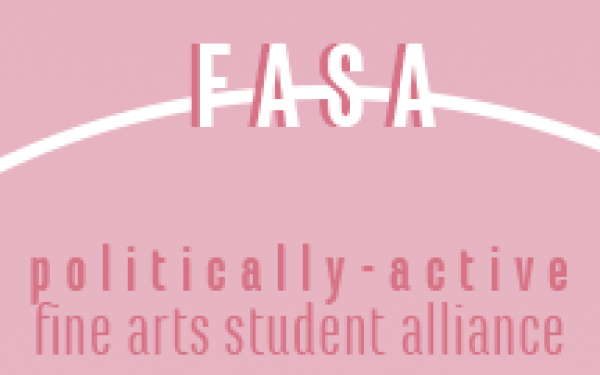Intro to Student Politics at Concordia
What You Need to Know About the Students that Govern You
Understanding how student politics works at Concordia can be a daunting task for any first-year student. Luckily for you, reporters at The Link have been covering student politics since 1980 and we’ve got what you need to know.
This article has been updated.
Student unions and associations work towards their goals through the use of student money. Just like the Canadian government collects taxes from its citizens, the student unions at Concordia collect money from student through the use of fee-levies, which are fees taken from your tuition. They then redistribute the money into events and services that focus on helping students throughout their university career, such as Concordia Student Union’s Legal Information Clinic, the Housing and Job Bank, and the Student Advocacy Centre.
But there are also groups, separate from student unions and associations, that also collect fee-levies, like the Peoples Potato, which uses its funds to serve free vegan meals each noon in Hall building.
For a group to gain access to student funds, a question first has to be put to referendum during elections (often at the end of March) or by-elections (often in November). If you think a particular group doesn’t deserve the fees they are asking for then it’s important to cast your vote before ballot boxes, located at both campuses, close.
HOW TO GET INVOLVED
Students who want to get involved within their student associations have to run in an election and convince their peers to vote for them. Depending on which association you are a part of, elections can consist of a slate (a team that runs together) or of individuals that run independently.
Although slates run together, students vote for the individuals within slates and not the slate itself.
In addition to voting for representatives, students can also vote on referendum questions which can dictate the mandate of student groups, or how student money is spent. Another way to get involved is to attend the general assemblies of the varying groups on campus.
THE STRUCTURE
Student associations can represent a faculty, which includes a number of departments, or just a single department.
ASFA, the Arts and Sciences Federation of Associations, represents all undergraduate students in the Arts and Sciences, whereas Concordia University’s Psychology Association solely represents undergraduate psychology students, for example.
Every faculty include a council of students or representatives. They are elected by students within that faculty who from the varying departments within their faculty.
Each association also has an executive team that handles things like group’s budget or organizing social events for the students they represent.
These two groups, the executive and the representatives or council, tend to meet once a month to discuss their shared political stances, or how to spend money on student initiatives. These meetings are open to the public, but you might get bored sitting through an entire one.
Student groups, particularly the Concordia Student Union, frequently use these council meetings to plan out what campaigns their group will focus on, as students politicians frequently use their status in an effort to sway the decisions made by the school’s administration. Student groups may also plan out press conferences or public protests as part of their campaigns.
These are the six largest student groups at Concordia.
Concordia Student Union (CSU)
General Coordinator: Omar Riaz
The CSU represents more than 35,000 undergraduate students at Concordia. They have the biggest influence on student life within the school. With a fee-levy of $3.80 per credit, they work with over a million dollars to provide students with services such as the Legal Information Clinic, the Housing and Job Bank, and the Student Advocacy Centre. They are also partners in building a new student housing co-op and a daycare. Both will be downtown.
The CSU is made up of students from all faculties. There are eight executives, as well as 14 Arts and Science councillors, six John Molson School of Business councillors, four Engineering and Computer Science councillors, three Fine Arts councillors, and three independent councillors.
In the last year, the CSU has focused on advocating for fossil fuel divestment, maintaining low tuition fees for international students, and the rights of students from marginalized communities. There was some success in those efforts. Proposed tuition fee increases for international students in certain programs never went through. They also added land acknowledgements to the beginnings of their council meetings and other events.
Arts and Sciences Federation of Associations (ASFA)
Interim President: Julia Sutera-Sardo
ASFA represents about 20,000 undergraduate students, which makes them the second largest student association at Concordia. They collect a fee-levy of $1.22 per credit, despite many attempts to raise it through referendum in the last two years. Just like the CSU, ASFA is made up of an executive team, councillors from the departments they represent, as well as some independent councillors.
ASFA’s executive team is serving on an interim basis as their elections were invalidated last spring by their council. Ballot boxes were open past their allotted time and quorum, the amount of students needed to vote in order for their elections to be valid, was not met.
The Political Science Student Association, has recently expressed their desire to leave ASFA because they argue it is poorly run.
The Association for the Voice of Education in Québec (AVEQ)
AVEQ is a student association that operates on the provincial level, representing the student associations that choose to join it.
It seeks to gain a broader understanding of the needs of students in the province through collaboration and research with other Quebec student associations. Because it’s a provincial group, it tends to put pressure on local political parties rather than focusing its efforts on swaying the top administrators of Quebec universities.
AVEQ’s member associations are the Concordia Student Union, Mouvements d’associations générales étudiantes de l’Université du Québec à Chicoutimi, and the Association générale étudiante de l’Université du Québec à Rimouski.
Concordia’s Graduate Student Association lost a referendum to join AVEQ last spring.
The association currently collects a fee-levy of $3.50 for each undergraduate student every semester.
Commerce and Administration Student Association (CASA-JMSB)
President: Rudy Grow
CASA represents more than 7,500 students that are enrolled within Concordia’s undergraduate business programs. CASA collects a $3.00 per credit fee levy from its students.
Their Board of Directors, which acts as a council, is made up of eight members of their executive team, the presidents of its six subsidiary association, the presidents of JMSB’s two case competition committees, five independent directors and two Alumni directors.
They tend to organize parties, and set up business opportunities or internships for the students it represents.
Engineering and Computer Science Association (ECA)
President: Chris Gallo
ECA is made up of about 3,250 undergraduate students and 17 societies.
The ECA collects a $2.00 per credit fee levy. The societies can be seen as clubs or organizations that relate to subjects offered with Concordia’s Faculty of Engineering and Computer Science. Their council is made up of eight executives, four department representatives, and four independent representatives. The ECA helps send students to more than 20 competitions.
Fine Arts Student Alliance (FASA)
General Coordinator: Cleopatra Boudreau
FASA represents about 3,500 undergraduate Fine Arts students, and they collect $2.05 per credit fee levy from those students. The association is run by its team of six coordinators and a Board of Directors, composed of delegates from its five affiliates and twelve clubs, and representatives from each of the Faculty of Fine Arts’ departments, who are voted in during the first meeting of the year.
In January 2016, FASA bailed out Cafe X, a student run not for profit coffee shop with two locations in Concordia’s downtown campus, by giving them a grant of $12,000. FASA students also pay a fee levy of $0.35 per credit to Cafe X.
In a previous iteration of this article, The Link reported that FASA does not operate with a council or Board of Directors. The Link regrets the error.





_600_375_s_c1.png)
WEB_600_375_90_s_c1.jpg)